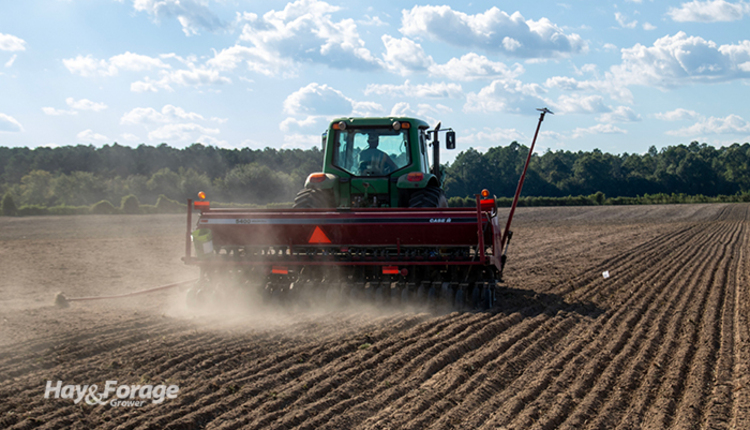
Springtime is already ticking by, and the window of opportunity to establish cool-season forage is closing. If planting has been delayed because of intermittent rain or inclement weather, it may be prudent to postpone seeding to late summer or fall.
In a recent article from Penn State University Extension, Justin Brackenrich explains how to determine if a spring seeding is still possible, as well as what to do if it isn’t. The field and forage crops educator says the decision will ultimately depend on if there is time to plant cool-season grasses before it’s too hot.
“Cool-season grasses will begin to grow when soil temperatures reach 40ºF to 45ºF, reach their optimum growth when temperatures are between 60ºF and 75ºF, and then decline in growth as temperatures continue to increase in the summer months,” Brackenrich states.
Seedlings need several weeks of conducive growing conditions to properly establish a root system before summer weather sets in. Plants may be able to survive hotter days as long as nighttime temperatures remain cool. After a certain point, though, the young forage will enter dormancy.
For a spring seeding to be successful, Brackenrich says the following assumptions must be true.
• There is adequate moisture for seedling establishment; not too much, but enough for germination and initial growth.
• Temperatures will remain consistent with state averages and will not be unseasonably warm or cool.
• Seedlings can tolerate daytime temperatures above 75ºF as long as nighttime lows are less than 60ºF.
• Stands will be established at least six weeks before nighttime lows exceed 60ºF, as this will send plants into dormancy.
He notes average daily temperatures vary widely across Pennsylvania, and the same can be said for other states. For example, the approximate date when lows exceed 60ºF for the first time in Philadelphia is June 2, whereas that of Williamsport, located three hours northwest, is June 22. Seedings can still be successful if forage is planted within six weeks of these dates; however, the risk of stand failure rises the longer establishment is delayed.
If a spring seeding isn’t in the cards, Brackenrich recommends planting a summer annual like sorghum-sudangrass or millet to make up for the yield loss a new stand could have provided. Then, consider seeding cool-season forage in late summer or fall instead of waiting until next spring to encourage better establishment under less of a time limit.

